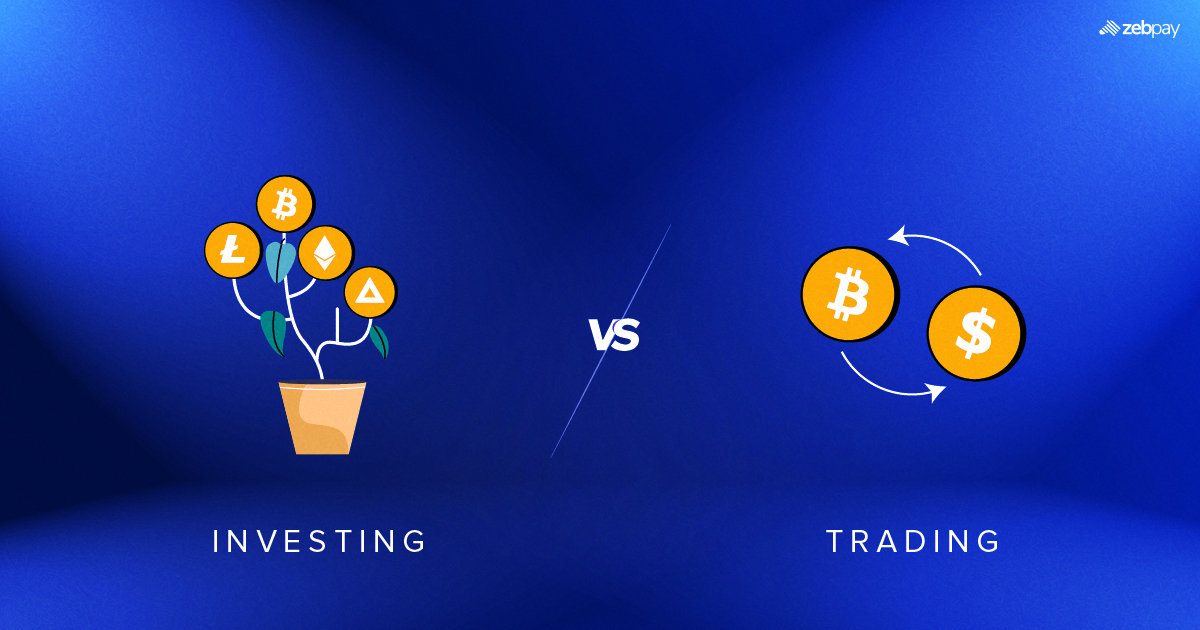14th January 2025 | ZebPay Trade-Desk
Intro to Crypto Trading
Crypto trading, similar to trading traditional financial assets, requires forecasting price movements and evaluating the future potential of digital assets such as Bitcoin, Ethereum, and others. The essence of trading lies in “timing the market” — determining the optimal moments to buy and sell assets based on predictions of entry and exit points. Traders rely on market news and technical analysis indicators to guide their decisions. Below are some common strategies employed by crypto traders:
- Arbitrage: Arbitrage is a trading approach that takes advantage of price disparities for an asset across different exchanges. Traders can profit by quickly buying from one exchange where the price is lower and selling on another where it’s higher, capitalizing on the small price differences.
- Day Trades: Day traders focus on identifying intraday price movements to secure profits within the same trading day, ensuring they close all positions before market close. Each trade can last from a few minutes to several hours.
- Swing Trade: Swing traders profit from short-term price fluctuations in crypto assets. Trades usually span from a day to a few weeks, with traders using technical analysis to spot significant market movements during this brief period.
- Position Trading: Position trading involves analyzing long-term trends and market patterns. Trades can last from several months to years, with a focus on taking advantage of major shifts in the market rather than short-term movements, much like swing trading but with a broader outlook.
- Scalping: Scalping is a fast-paced trading strategy where traders make numerous trades in a very short time, aiming to capture small price movements. Scalpers are the most active participants in the market, executing quick trades that can last mere minutes or seconds, minimizing risk while generating small profits.
The main advantage of trading crypto is the exciting opportunity to make quick profits by taking advantage of short-term price movements and market trends. Many crypto traders also view assets like Bitcoin (BTC) as a reliable store of wealth, especially since crypto assets are designed to operate independently of central institutions. Additionally, trading crypto between peers comes with lower transaction fees compared to traditional banking or financial institutions. With widespread availability, anyone with an internet connection and a mobile device or computer can easily set up a crypto wallet and start trading, making crypto accessible to a global audience.
That said, trading crypto is a dynamic and potentially rewarding activity, but it does come with risks, primarily due to its high volatility. Prices can experience significant fluctuations, so it’s important for traders to stay vigilant and carefully monitor their positions. For beginners, starting with small amounts while gaining experience can help minimize risk. It’s also worth noting that while crypto trading offers great potential, it carries higher risks compared to many other forms of investment, so it’s essential for each trader to evaluate their risk tolerance and approach carefully.
How Does Trading Differ From Investing?
Investing in crypto, often referred to as “HODLing” (a play on the word “HOLD,” meaning “Hold On For Dear Life”), is a longer-term approach compared to active crypto trading. Crypto investors tend to focus less on short-term market fluctuations and more on the long-term potential and fundamentals of the assets they purchase. Below are a few commonly accepted investing strategies:
Read more: Crypto Trading Strategies
- HODL: As previously stated, hodling is primarily concerned with purchasing crypto assets and holding them indefinitely. The underlying principle is that crypto prices will rise in the long run.
Read more: HODLing vs Staking
- Cost Averaging in Dollars: This strategy involves investors purchasing crypto assets in small amounts at regular intervals, regardless of market fluctuations. This approach, in theory, helps to average prices over time and reduces the impact of volatility on one’s investment portfolio.
Read more: What is Dollar Cost Averaging
- Value Investing: This entails locating undervalued crypto assets with strong fundamentals and high potential. Buying at a low price gives investors confidence in the asset’s potential appreciation.
- Growth Investing: In the hopes of increasing an investor’s capital, growth investors invest in new assets that are expected to grow exponentially in the future.
- Investing in Index Funds: Crypto index funds are intended to provide investors with exposure to a diverse set of digital assets. They are structured similarly to exchange-traded funds (ETFs) and mutual funds in that they hold a portfolio of various assets.
The most significant advantage of investing in crypto assets is the possibility of capital appreciation over time. Despite price and market sentiment fluctuations, historical data shows that, given the crypto market’s rapid growth over the last decade, being a long-term investor could potentially benefit one.
Investing in crypto also carries lower risks than trading in crypto because it requires a longer-term commitment. Investing in crypto assets, on the other hand, can be extremely risky due to their high volatility. As a result, before investing their hard-earned money, investors should ensure they understand the fundamentals of crypto and the risks involved.
In general, investors buy crypto assets because they believe the price will rise over time. Traders, on the other hand, profit from market volatility by holding their coins for short periods of time.
| Investing | Trading | |
| Time Frame | Long Term | Short Term |
| Trade Frequency | Low-frequency | High-frequency |
| Risk Profits | Conservative/Low risk | Risk-taking |
| Strategies | Buy-and-Hold/HODLing, Dollar-cost-Averaging, Value Investing, Growth Investing, and Index Fund Investing | Arbitrage, Day Trading, Swing Trading, Position Trading, and Scalping |
You can learn more about trading and investing on ZebPay blogs. Join the millions of users already trading on ZebPay Australia.







